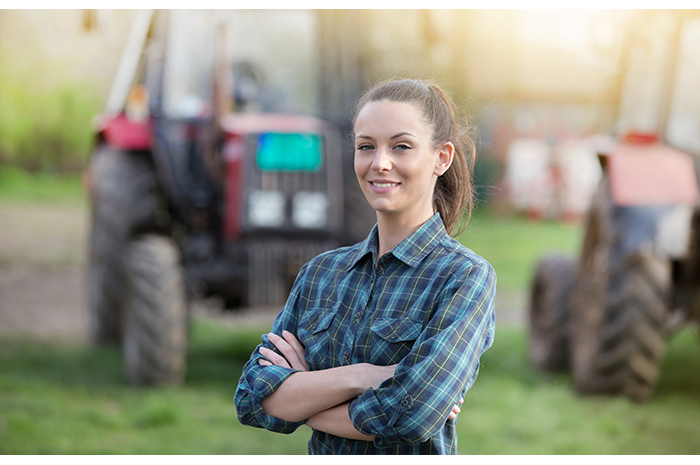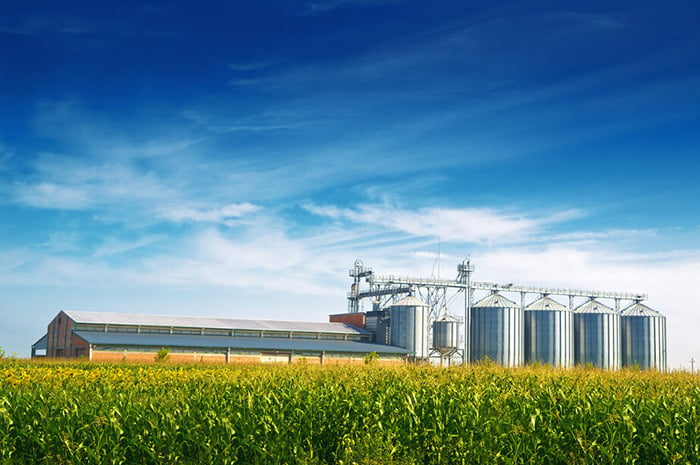How safe is your farming operation? As a workplace, agriculture is one of the most dangerous industries out there, as the risk of death to farmers is 800% higher than other jobs, and the leading cause of death is tractor rollovers. Other safety concerns to Minnesota and South Dakota producers arise from bins and silos, handling livestock and exposure to dust, excessive noise and chemicals. The good news is, there are plenty of ways to mitigate the risk of injury and death, and we have rounded up some sources of grants and information.
But first, we’ll share some statistics that underscore the need to make our family farms safe places to work and play.
Are safety enhancements on the farm worth it?
Farmers sometimes hesitate to invest in safety enhancements to their facilities and equipment. They might argue these don’t directly generate farm revenue. Also, there’s a “it will never happen to me,” mindset, because it’s only human to feel confident in our skill and ability to avoid and prevent incidents that cause injury or death — it gives us a sense of control over what happens in our lives. To experienced producers, especially those who grew up with no protective equipment, the campaign to improve safety can feel like infringement on their way of life.
Proving the ROI of safer farm sites can be an abstract exercise, because you’ll never be able to pinpoint the financial benefits. However, in business, it’s considered best practice to invest time and resources in risk management to safeguard assets. Like an insurance policy or on-site fire extinguisher, safety enhancements offer the farm another layer of protection for its assets — in this case, the asset is you. Besides, a life-changing accident can happen in an instant, before we have a chance to react. If the safety equipment saves you or a loved one, you'll never regret that you had it.
How many farmers get injured each year?
The Bureau of Labor Statistics is the go-to for data on ag-related injuries and fatalities. In 2021, 453 workers in the ag, forestry, fishing and hunting industry died from work-related injuries, making it the fourth leading industry of workplace fatalities; while 10,400 workers sustained ag production related injuries that required time away from work.1
However, it’s important to note that ag injury stats reported by the Bureau of Labor Statistics excludes family-run operations, which means we don’t know the full extent of serious injuries and fatalities on the farm.
One USDA study led by Penn State researchers sheds some light on the pervasiveness of farm–related injuries — and they suggest that young farm workers are particularly at risk from tractor injuries.2
By analyzing emergency admissions data from 2015-2019, they found 62,079 people sought treatment for ag-related injuries. Of those, nearly a third (30%) were youths and one-quarter (22%) were elderly — age groups that wouldn’t always be represented in BLS data. Fractures, open wounds and amputations were the most common reason for the emergency room visit, with tractors and other vehicles being the most frequent cause.
“Small farms are family-oriented businesses, and often they have all their family members helping out,” says study author Judd Michael, Penn State professor of agricultural and biological engineering, College of Agricultural Sciences. “And the kids who are helping out or visiting the farm are exposed to hazards that they may not understand or know how to react to. They're not mature enough to foresee hazardous situations. And that leads to injuries or worse — in some cases, fatalities.”
The data on the number of youth hurt or killed on the farm is incomplete and likely underreported, because there’s no centralized system tracking this data. One estimate shows 33 children a day get seriously hurt on a farm, with one death every three days.3 For youth who were not engaged with work, animals were the leading cause of injuries. However, vehicles (including ATVs) led the cause of injuries for ag workers under the age of 18.
Resources to enhance safety on the farm
It’s difficult to put a dollar amount on the consequences of ag injuries and deaths. But the future of the enterprise depends on the health and safety of everyone in the family.
To understand the risks of farm life, from tractor rollovers to grain bin suffocations, and to access useful trainings and tools to make your operation a safer environment, we put together a few resources.
Minnesota Department of Agriculture: Find information about its Rollover Protective Structures (ROPS) Rebate Program and Grain Storage Facility Safety Cost-Share which help you recover a majority of the costs of these important safety upgrades. Given the effectiveness of these programs, we'd call this a no-brainer.
Upper Midwest Agricultural Safety & Health Center (UMASH): Access fact sheets, posters, videos and other resources to improve the safety and health of farmers and their families.
Farm Answers: Looking for information on a particular safety issue? This resource center offers fact sheets and videos covering 200 ag topics.
National Education Center for Agricultural Safety: Provides safety and rescue training including in-person events and webinars. Topics include grain bins, manure pits, fall prevention, child safety, tractor-rollover response and more. They also have farm first-aid kits available for order.
Farm safety for youth
Cultivate Safety: A resource center for parents and grandparents to identify risks on the farm and how to mitigate them.
National Children’s Center for Rural and Agricultural Health and Safety: Has a library of topics, including Safety Guidelines for Hired Adolescent Farm Workers (SaGHAF) and Creating Safe Play Areas on the Farm.
Expertise you can trust
Minnwest Bank helps farmers achieve success with our personalized lending approach. When it’s time to make facility and equipment improvements to reduce risk and enhance safety on your farm operation, we’ll look for lending solutions that get the job done while protecting your working capital. Many of our ag lenders have roots on the farm or ranch, so we understand firsthand where you’re coming from and what you’re working to grow for future generations. To explore financing options to enhance the safety of your farm, visit a helpful ag lender in your community today.
- Injuries, Illnesses, and Fatalities 2021 | U.S. Bureau of Labor Statistics
- Study Reveals Agriculture-Related Injuries More Numerous than Previously Known | USDA Top of Form
- 2022 Fact Sheet Childhood Agricultural Injuries | National Children’s Center for Rural and Agricultural Health and Safety


